Buryat holiday Sagaalgan – a holiday that symbolizes the renewal of man and nature. It fits into the idea of the white month and occupies a central place in the calendar of the Buryat people. In addition, during this celebration, residents of the republic can enjoy several days off, thanks to the generosity of the head of Buryatia, who signed a decree on the date of the official celebration Sagaalgan 2025 and organizing events related to this holiday. What interesting things can you tell about the holiday?

History of the Sagaalgan holiday
First mention Sagaalgana celebrated in the 13th century in China. Later it spread to Mongolia. The history of the holiday is inextricably linked with religious beliefs.
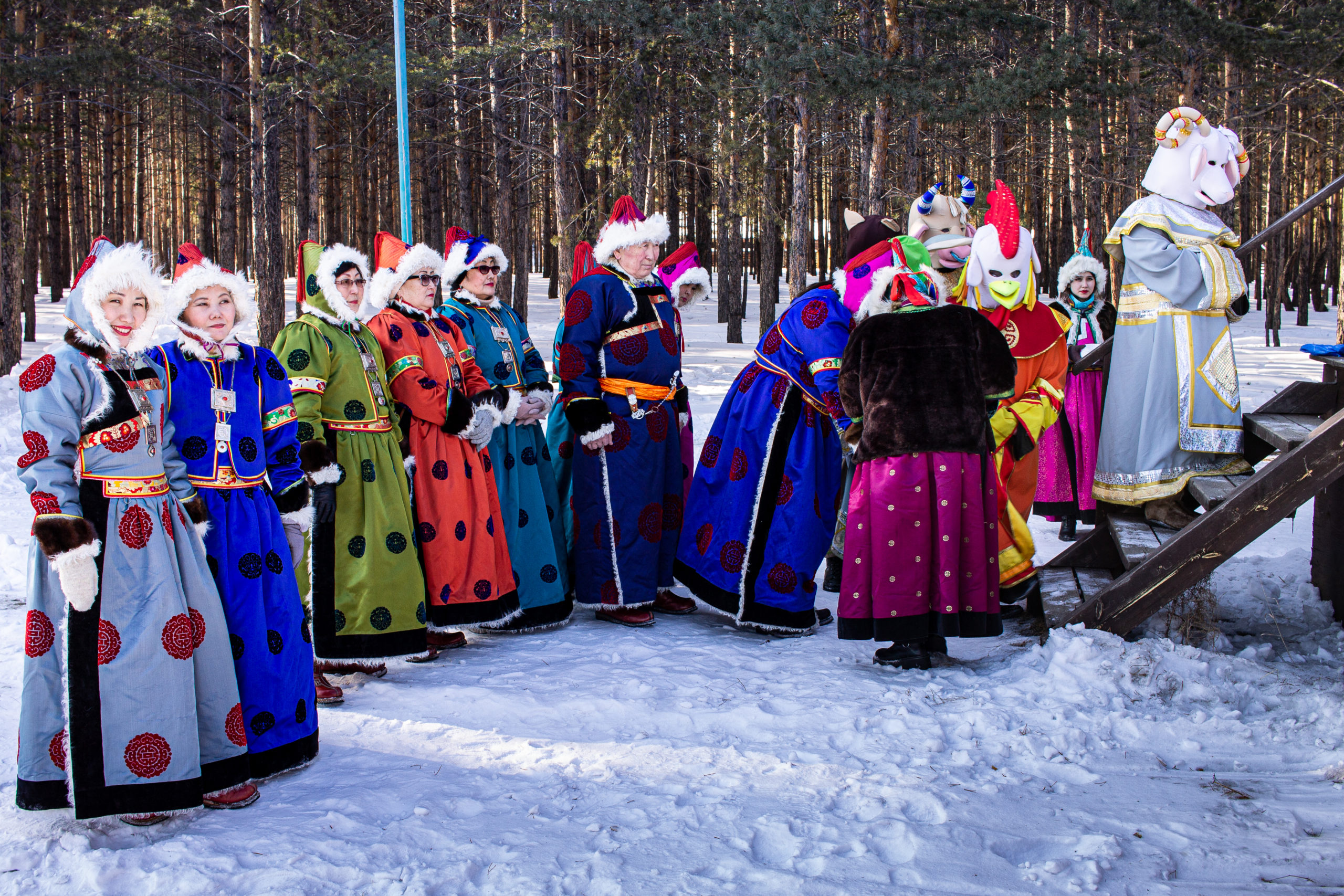
Initially, it was dedicated to dairy products and was held in the fall. Then Chinese astrology made its contribution, and eventually, at the insistence of Genghis Khan's grandson, Khan Kublai, Sagaalgan was moved to the end of winter, and after a while it ceased to be celebrated only for dairy products. The new meaning of the White Month was entirely based on religious beliefs, or rather, was associated with the renewal of man and nature, cleansing from all that is bad, and the hope for happiness and well-being.
To Russia Buryat New Year came with the establishment of the Gregorian calendar, was not particularly celebrated, but the traditions of Buddhists associated with the date were preserved and performed. Over time, the society of the Russian Empire began to despise religion, it was ridiculed not only by ordinary citizens, but also by famous people. Moreover, when the Bolsheviks took over the country, they completely banned any religion. This led to Sagaalgan leaving for 30 years. The revival began only in the 1990s.
In Russia, the holiday is official in Buryatia, Zabaikalsky Krai, Aginsky, Ust-Orda, Kalmykia, Tuva, and the Altai Republic. The first day of the White Month is declared a day off.
It is actively practiced by residents of China and Mongolia, and is also widespread, although to a lesser extent, in some areas of India and Tibet.
When is the Buryat New Year 2025 celebrated?
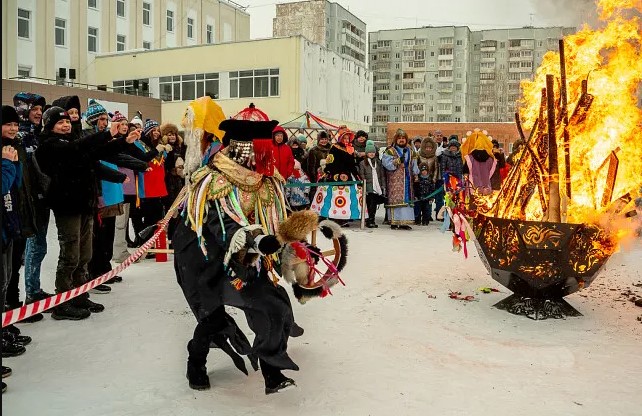
In the 21st century, the start date of the Buryat holiday falls in February almost every year. Floating Sagaalgan date is related to the fact that the holiday is tied to the lunisolar calendar, which is 12 months shorter than the Gregorian calendar. Because of this, the dates of the new moons and full moons cannot coincide every year.
In 2025, Buddhist believers will celebrate Sagaalgan 2025 February 10, that is, it will come on the night from the 9th to the 10th. Usually, a day off is arranged only on the first day. However, this year in Buryatia, officials decided to move one non-working day. As a result, White Month holiday in 2025 accompanied by official holidays on February 9, 10 and 11.
Preparing for the holiday
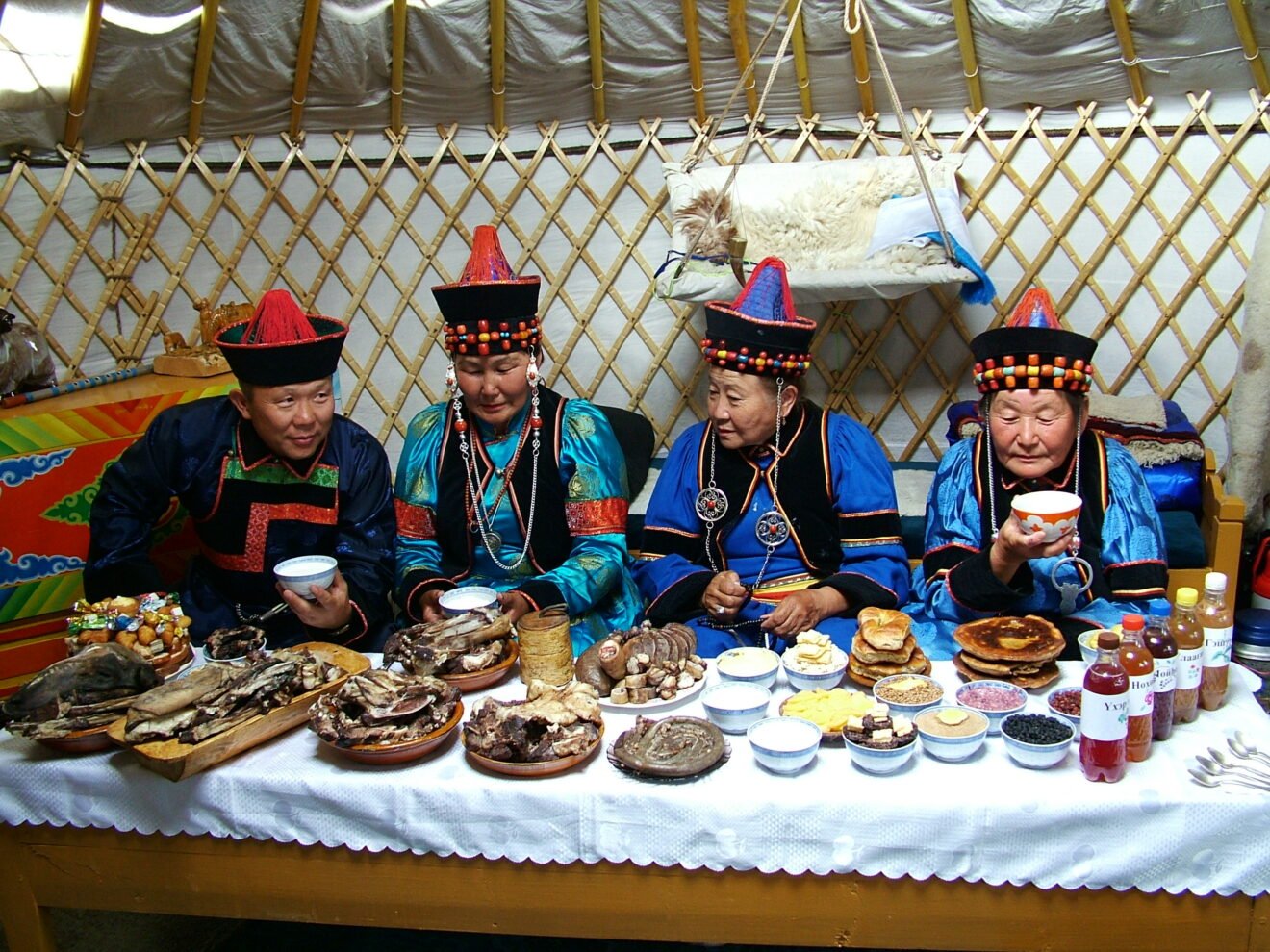
The last day of the year according to the lunar calendar is called Butuu uder, which means in translation "a period of silence and stillness". Buryats understand the importance of restraint in words, thus radiating energy, collecting thoughts and preparing speeches. In the following days, from the 1st to the 15th of the lunar calendar, they try to give as many gifts to others as possible and make good wishes. All 12 months before the New Year, believers pray so hard that they completely exhaust themselves, this helps to cleanse themselves. Preparation for the holiday is a time to recover.
What Buddhists do and what they practice during preparation:
- They observe a one-day fast - they refuse food containing meat, fish and eggs. The goal is to accumulate energy and emotions that are so often spent on conversations, because true strength lies in maintaining silence;
- They choose new clothes - special importance is attached to the national costume, which must be clean and in excellent condition;
- Rearrange the furniture, buy new things for the house. Even small details like towels, curtains or tablecloths should bring positive energy to everyone.
The altar requires special attention. What to do and how to prepare the sacred object:
- Completely updated;
- They prepare a lot of saffron arshan;
- Purchase new incense, lamps and other related items;
It is forbidden to place meat dishes on the altar, as Buddha did not eat them and said that they cause ulcers.
How White Month is Celebrated
The Buryats divide the celebration into two parts. The first is religious. On the night before the New Year according to the lunar calendar, prayers and services are held in datsans in honor of the deities to protect against troubles, misfortunes and to receive a blessing for success in the coming year. On the last day, ritual fires are lit, where everything bad and negative burns in the fire.
On the eve of the holiday, Buryats clean their houses, renew their clothes and get rid of old things to symbolically say goodbye to the past. Sagaalgan begins on the first day of the spring new moon and comes at dawn. It is believed that the deity Balden Lhamo visits every house at dawn to count everyone who has already woken up and is ready to meet the new day. Therefore, it is customary to get up very early so as not to miss your luck in the coming year. Then the Buryats go to solemn prayers.
The day after Sagaalgan, Buddhists hang out "Khiy Morin" flags, which are consecrated in the temple. The wind that flutters these flags carries prayers to the deity. During the 20 days of the White Month, festive services are held in the datsans.

The second part is everyday. The overwhelming majority of people celebrate Sagaalgan as a family, folk holiday, and not as a religious one. It lasts 30 days, guests are invited and various treats are prepared. It is customary to congratulate older relatives, starting with parents, and to visit relatives with gifts.
Nowadays, horse races, wrestling competitions and other traditional Buryat games are held on New Year's days. Theaters and concert halls present theatrical performances and performances. The yokhor, a traditional Buryat round dance, is a must.
What food do they cook?
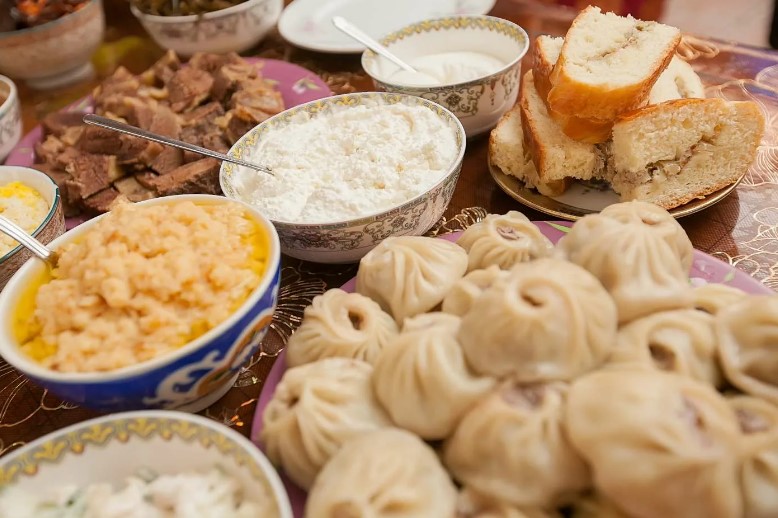
On the tables of hospitable hosts you can find a variety of dishes. Meat and dairy products predominate. What is often cooked:
- Orukh is a tender and juicy dish made from horses and bulls. The meat is marinated in special spices and then cooked over an open fire;
- Hayan - is a thin flatbread made of dough that is baked on stones. The main thing is to get a crispy crust. Hayan is used with various sauces, oils and meat dishes. It is a favorite treat on holiday tables and a symbol of abundance;
- Aarkai is a curd cheese made from mare's or cow's milk. It has a soft and creamy texture and a slightly sweet taste. Aarkai can be eaten with honey or used as a filling for various pies and casseroles;
- Buuza – pies stuffed with various fillings, such as seafood, fish, omul, meat;
- Khushuur - looks like chebureki, is also made from dough and meat, and then fried in a frying pan in a large amount of oil. However, it is smaller in size than chebureki;
- Shulen is a traditional homemade noodle soup. The meat is beef and chopped very finely. The main feature is the almost complete absence of spices and salt, but you can often find shulen with herbs;
- Shoro is marinated lamb meat that is put on skewers and then baked on coals. The ingredients of the marinade are local herbs and milk vodka. The meat is kept in this mixture for 8 hours. Sometimes thyme is added;
- Boovy - there are a small number of desserts in Buryat cuisine. Boovy is one of them, presented to guests as a sign of respect. The products are made in two forms: ear and flat cakes with cut out patterns. They also look like cookies. The ear shape is explained by the fact that it is a symbol of the attention of Buddha's sermons. They are made from butter, milk, sugar and eggs. A large amount of vegetable oil is used for frying.
Traditions
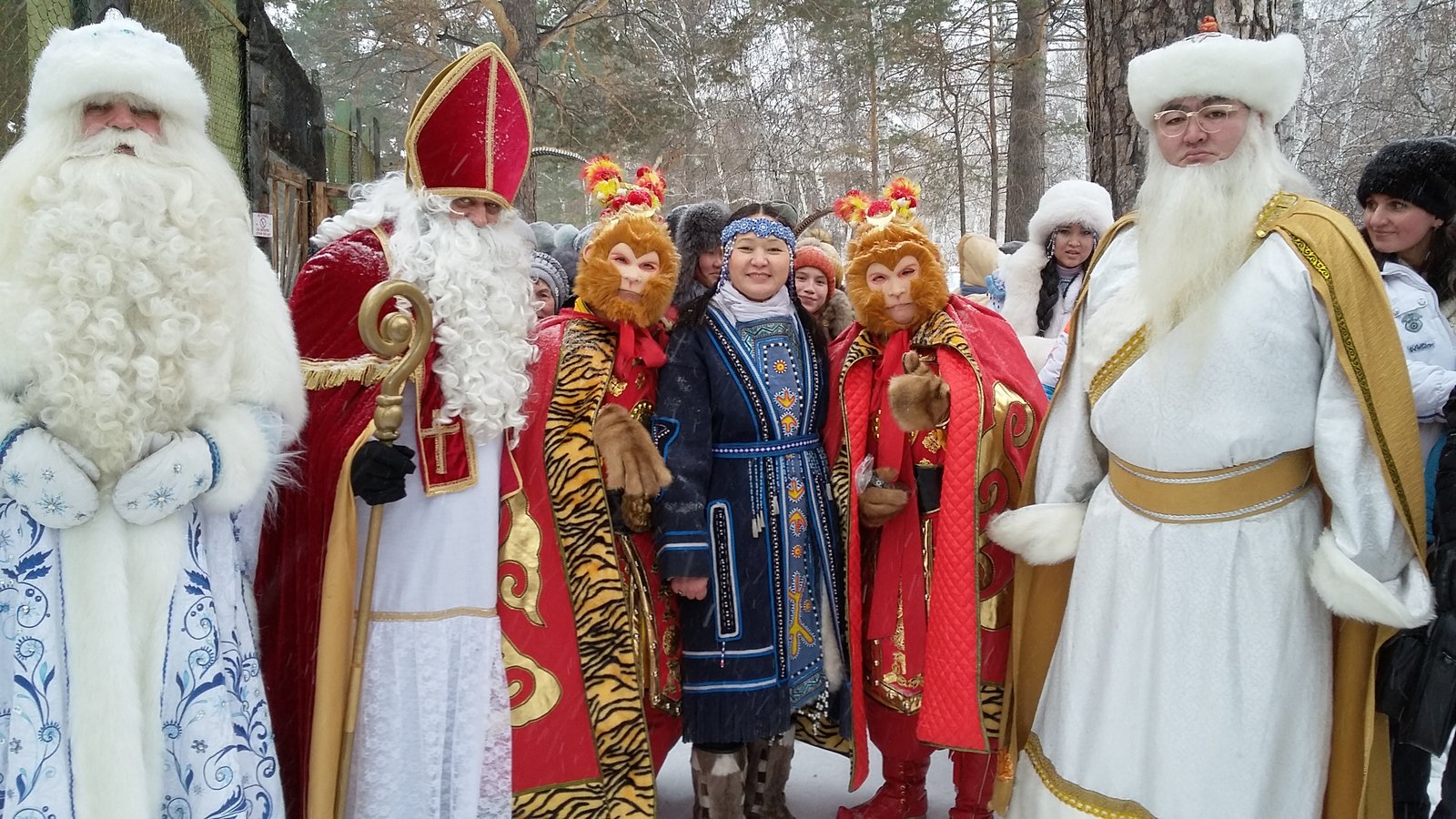
New Year in Buryatia accompanied by traditions.
- Particular attention is paid to cleaning their homes;
- People bring dairy and meat offerings, but abstain from eating, observing a one-day fast. At the end of the fast, various "white food" made from dairy products appears on the table. In addition, the festive table includes lamb meat products, sweets, and fruit drinks made from wild berries;
- On the first day Sagaalgan in Buryatia Believers wear traditional headdresses and congratulate their loved ones and parents, exchanging gifts with them;
- Second day White Month holiday in Buryatia begins with visiting more distant relatives. This is of particular importance for the younger generation, who are obliged to know their family ties up to the seventh generation. Some trace their genealogy even further. It is not without folk games and amusements.
Buryat New Year — this is a bright and mysterious holiday, combining ancient rituals and traditions, and is a real cultural phenomenon.

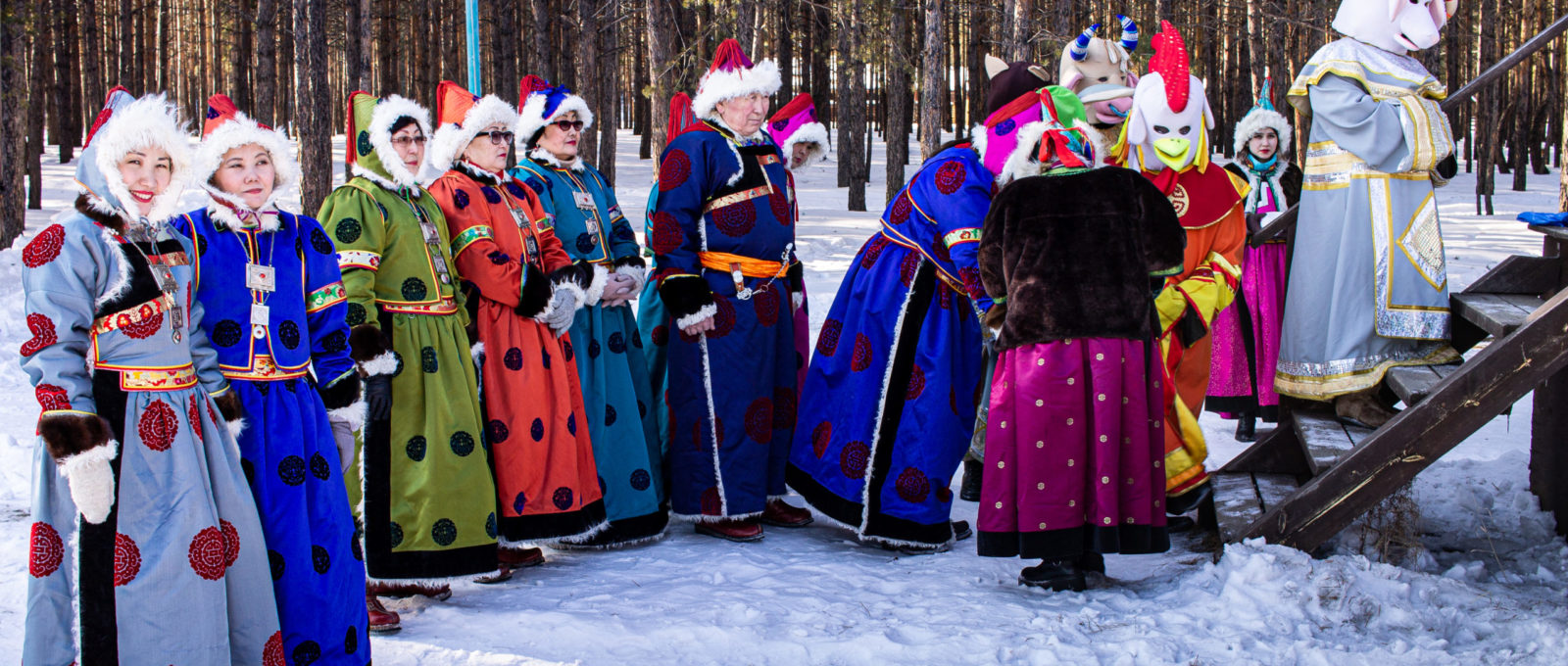












Оставить Комментарий